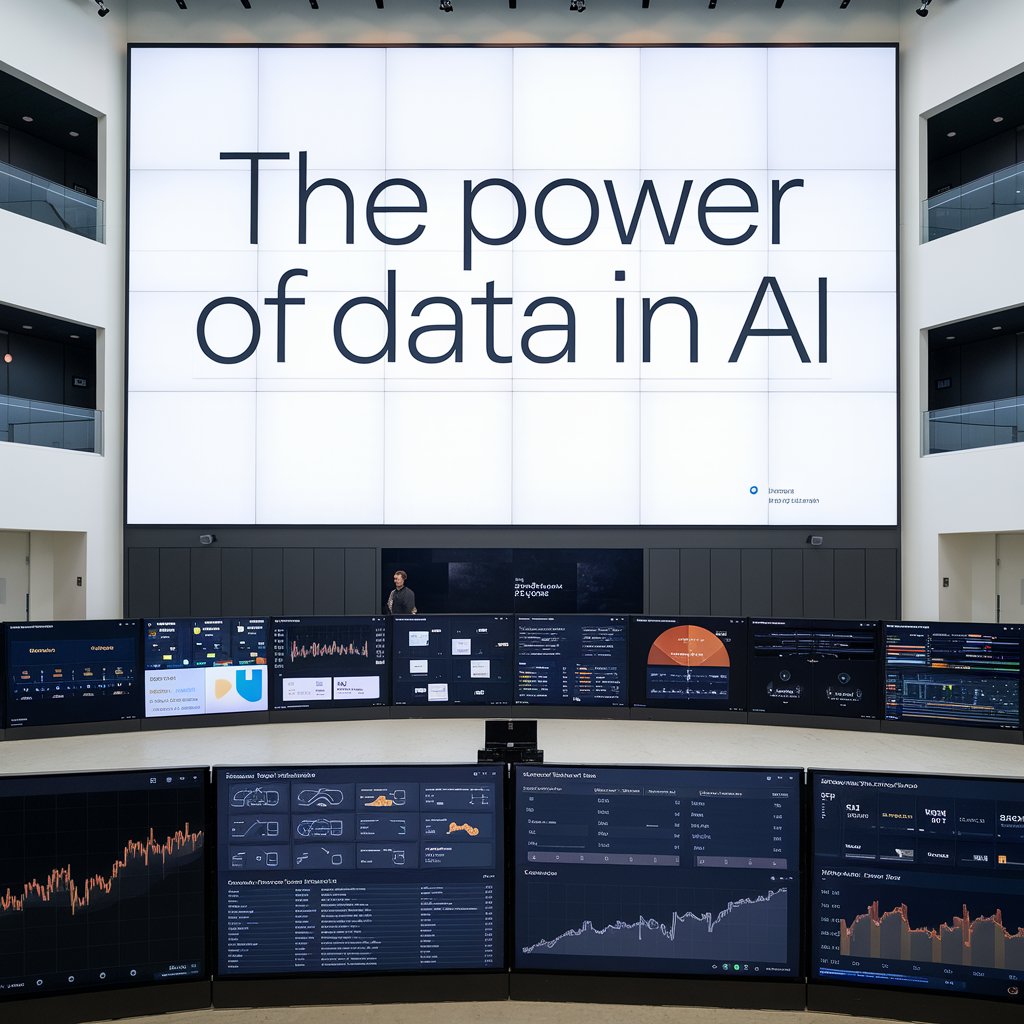
Why War Data is Crucial for AI Models
The Importance of Real-World Data in AI Training
AI models are only as good as the data they are trained on. This is why the quality and diversity of data are crucial in creating models that are accurate, reliable, and useful. War data, in particular, offers unique insights that other datasets cannot provide. Power of Data in AI This data can include images, satellite data, video footage, communications, and more, all of which are essential for training AI systems. Real-World Relevance War data allows AI models to be trained on complex, dynamic environments. These environments are often unpredictable and chaotic, making them the perfect testing ground for AI models that need to function in unpredictable real-world situations. Wide Range of Applications By leveraging this war data, AI can be trained to improve real-time decision-making, enhance predictive capabilities, and assist in military and humanitarian efforts.The Ukraine War Data Collection Effort
Ukraine has collected an immense trove of war-related data, capturing everything from battlefield communications to satellite images of conflict zones. This data collection is a multifaceted effort involving military personnel, government agencies, and AI experts. Let’s explore some of the key aspects of this data collection process.Types of Data Collected
Ukraine’s war data collection effort includes several categories:- Satellite Imagery:
- High-resolution satellite images of conflict zones are being collected to analyze troop movements, identify strategic targets, and monitor environmental changes in war-torn areas. Additionally, these images help assess damage, track infrastructure shifts, and provide critical insights for military planning.
- Video Footage:
- Video data captured by drones and other surveillance equipment helps to understand troop movements, identify weapon systems, and assess the damage caused by various strikes. Moreover, this data aids in pinpointing the effectiveness of military tactics and providing real-time updates on the battlefield. As a result, it enhances decision-making and supports more targeted responses to evolving situations.
- Audio and Communication Data:
- Intercepted communications, including phone calls and radio chatter, provide insights into enemy operations, troop deployments, and battlefield strategies. Furthermore, these communications offer valuable clues about the enemy’s intentions, enabling military forces to anticipate movements and adapt strategies accordingly. Power of Data in AI As a result, this information plays a critical role in enhancing situational awareness and improving tactical responses.
- Geospatial Data:
- This data is crucial in creating detailed maps of conflict areas, helping AI models understand terrain, military infrastructure, and urban settings. Additionally, it allows for a comprehensive analysis of key geographical features, enabling better planning and strategic decision-making. As a result, the data enhances the accuracy and effectiveness of military operations in complex environments.
- Social Media and Open-Source Intelligence (OSINT):
- Ukraine has also leveraged social media platforms and open-source intelligence to gather real-time updates, reports, and images from civilians and journalists, which contribute to the overall data set. In addition, these sources provide diverse perspectives and on-the-ground insights that complement traditional intelligence. Power of Data in AI Consequently, this broadens the scope of data available, improving the accuracy and relevance of AI models trained on it.
How Ukraine Uses This Data to Train AI Models
Once collected, the data is processed and fed into AI systems for training. Subsequently, the vast amounts of data enable AI models to learn and adapt to a variety of situations. Moreover, this continuous influx of information allows AI systems to refine their capabilities over time. Here are a few ways Ukraine uses this data to enhance AI training:1. Improving Predictive Models
AI models trained on war data can analyze patterns and predict future events. In addition, by processing historical data, these models can forecast potential flashpoints, providing valuable insights. As a result, this enables Ukraine and its allies to anticipate future developments and make more informed decisions in real-time.2. Enhancing Image Recognition
With vast amounts of visual data, AI models train to recognize military equipment, troop movements, and geographic features. Consequently, this proves invaluable for military intelligence and surveillance purposes. Additionally, it enhances the ability to identify key targets and assess battlefield dynamics, further supporting strategic decision-making.3. Real-Time Decision-Making
AI can be used in real-time to support decision-making on the battlefield. By analyzing incoming data and generating actionable insights, AI systems can provide commanders with recommendations to optimize operations. Furthermore, this real-time analysis enables rapid responses to changing conditions, ensuring that military forces remain adaptable and proactive in dynamic environments. As a result, AI enhances overall operational efficiency and effectiveness.4. Automation of Humanitarian Efforts
AI can also be used to support humanitarian aid efforts. For instance, by analyzing data about displaced populations, damaged infrastructure, and supply chain logistics, AI systems can improve the efficiency of humanitarian responses. Moreover, this data-driven approach enables faster identification of priority areas, allowing aid to be directed where it’s most needed. As a result, AI plays a crucial role in ensuring timely and effective assistance during crises.The Benefits and Risks of AI Models Trained with War Data
Benefits of Using War Data for AI Training
- Accuracy and Real-World Application: AI models trained on war data are more accurate because they are based on real-world scenarios.
- Improved Decision-Making: AI can help military commanders make better decisions faster by processing large amounts of data in real-time.
- Enhanced Prediction Models: With more data, AI models can better predict enemy movements and actions, helping to anticipate threats and improve tactical responses.
Risks of Using War Data for AI Models
- Ethical Concerns: Using war data raises important ethical questions, particularly regarding privacy, consent, and the potential for misuse of AI technology in warfare.
- Security Risks: Hackers could manipulate AI models, leading to the misuse of sensitive data.
- Bias in AI: If the data is not representative or balanced, AI models can develop biases that lead to inaccurate predictions or decisions.

The Role of AI in Modern Warfare and Conflict Resolution
How AI Enhances Military Strategies
AI has revolutionized military strategies, allowing for faster, more informed decision-making. With access to war data, AI can assist in mission planning, threat analysis, and battlefield management. AI systems can process enormous datasets to identify emerging threats, optimize resource allocation, and improve overall combat effectiveness. Power of Data in AI..AI in Conflict Resolution
Beyond the battlefield, AI can also be a valuable tool for conflict resolution. By analyzing war data, AI models can help diplomats and policymakers understand the causes of conflict, predict potential escalation points, and suggest non-violent solutions.Future Implications: What’s Next for AI and War Data?
The success of Ukraine’s war data collection effort has set a precedent for future AI training projects. This initiative has sparked discussions about the future role of AI in warfare, peacekeeping, and international diplomacy. As more nations follow suit, AI models will become more refined and capable of providing invaluable insights into global security.The Expansion of AI in Global Security
Countries around the world may increasingly turn to AI to train their defense systems, predict security threats, and improve military strategies. The use of war data in AI training could become a key factor in maintaining national security.Balancing Innovation and Ethics
As AI integrates more into military operations, we face the challenge of balancing its innovative potential with ethical considerations. How can we ensure responsible use of AI while preventing it from exacerbating conflict or violating human rights?Conclusion: The Transformative Power of AI Trained on War Data
Ukraine’s initiative to collect vast war data to train AI models is a groundbreaking step toward improving AI’s real-world applications. By harnessing this data, Ukraine is not only enhancing its own military capabilities but also contributing to the broader development of AI in security and conflict resolution. The success of this effort underscores AI’s transformative potential in shaping the future of warfare, humanitarian response, and global diplomacy. Additionally, it highlights how AI can drive significant advancements in these areas. However, ensuring responsible use of AI will be crucial to avoid exacerbating conflicts and promote peace. By balancing innovation with ethical considerations, we can maximize AI’s benefits while minimizing its risks.FAQs
1. What types of war data is Ukraine collecting? Ukraine is collecting satellite imagery, video footage, audio communications, geospatial data, and open-source intelligence (OSINT) to train AI models. 2. How is AI benefiting Ukraine’s military? AI is helping Ukraine’s military make real-time decisions, improve predictive models, enhance image recognition, and automate humanitarian responses. 3. What are the ethical concerns surrounding AI training with war data? The ethical concerns include issues of privacy, consent, misuse of AI technology, and potential bias in AI models. 4. Can AI be used to predict future conflicts? Yes, AI can analyze war data to predict potential flashpoints and anticipate future conflicts, helping to improve preparedness and response strategies. NewsBy understanding the ongoing effort of Ukraine to collect war data for AI training, it’s clear that this is a pivotal moment for both military strategy and the future of AI technology. As the world continues to navigate the intersection of technology and conflict, these AI systems will play an essential role in shaping .
- #ArtificialIntelligence
- #AIandData
- #DataScience
- #MachineLearning
- #BigData
- #AIInnovation
- #DataDrivenAI
- #TechnologyTrends
- #AIApplications
- #DataAnalytics
- #FutureOfAI
- #SmartTechnology



